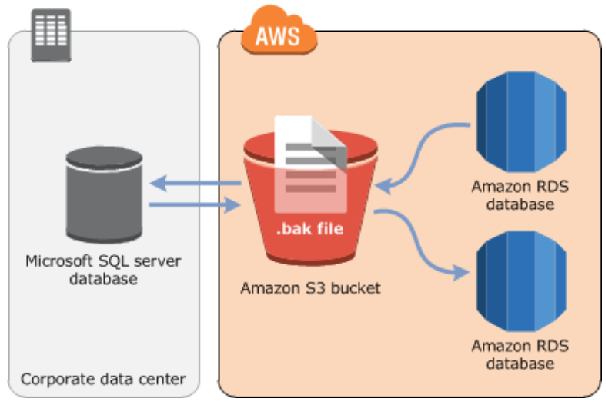Your cart is currently empty!
Category: Amazonrds
-
Khóa học miễn phí Amazon RDS – Overview nhận dự án làm có lương
Amazon RDS – Overview
As RDS is a managed service provided by AWS, we can expect that like other AWS services it will provide scalability, security and cost effectiveness to the various RDBMS it provides. The database products available through AWS RDS are as listed below.
-
MySQL – Support versions for MySQL 5.5 to 5.7. Minor upgrades happen automatically without needing any involvement from the user.
-
MariaDB – Support versions for MariaDB from 10.0 to 10.2.
-
Oracle – Supports version 11g and 12c. You can use the oracle license provided by aws or bring your own license. The costing for these two are different.
-
Microsoft SQL Server – Supports version 200t to 2017. Also AWS supports the various editions like – Enterprise, Standard, Web and Express.
-
PostgreSQL – Supports version 9 to 11. Can be configured as a multi A-Z deployment with read replicas.
-
Amazon Aurora – This is Amazon’s own RDBMS. We will be covering it in a separate tutorial.
Each of these Database software is offered as Software as a Service (saas) by providing following features.
-
Customization of CPU capacity, Memory allocation and IOPS(Input Output per second) for a database instance.
-
Manage software patching, failure and recovery of the RDBMS software without any user intervention.
-
Allow manual or automated backup of the database using snapshots. Restore the database from these snapshots.
-
Provide high availability by creating a primary and secondary instance which are synchronous. In case of a failure of primary AWS RDS automatically fails over to secondary.
-
Put the databases in a virtual private cloud (VPC) and aslo use AWS IAM (Identity and Access management) service to control access to the databases.
-
There are two purchase options for AWS RDS service. On-Demand Instances and Reserved Instances. For on-Demand instance you pay for every hour of usage while for Reserved instance you make a upfront payment for one year to three period time frame.
Khóa học lập trình tại Toidayhoc vừa học vừa làm dự án vừa nhận lương: Khóa học lập trình nhận lương tại trung tâm Toidayhoc
-
Khóa học miễn phí Amazon RDS – Environment nhận dự án làm có lương
Amazon RDS – Environment
For using any Aws service you ned to set up an AWS account. We assume you have set up the AWS account by following the guide lines mentioned in the aws home page. Below are the preliminary steps to access the RDS services from the console.
Step-1
After logging in to the amazon console, to access the RDS services we need to navigate to the Amazon RDS home page by searching for RDS in the search box of under the services tag as shown in the diagram below.
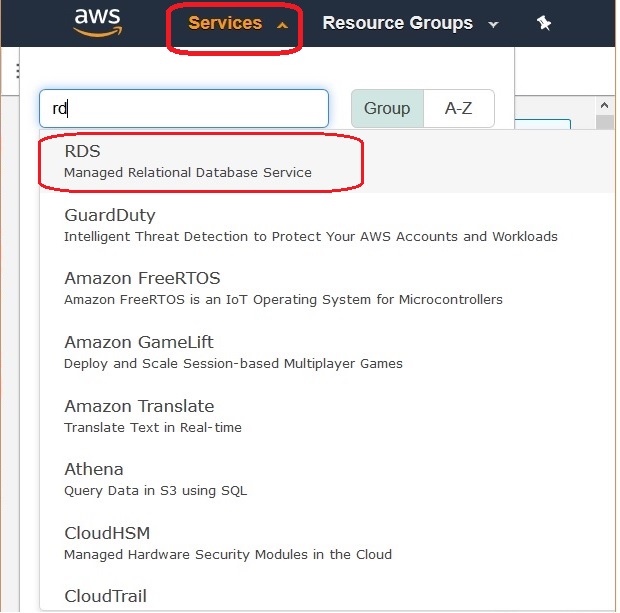
Step-2
On clicking the link above we get the Amazon RDS home page. If it is the first time ever you are accessing RDS services, then it will show you a screen prompting for creating a database as shown below.
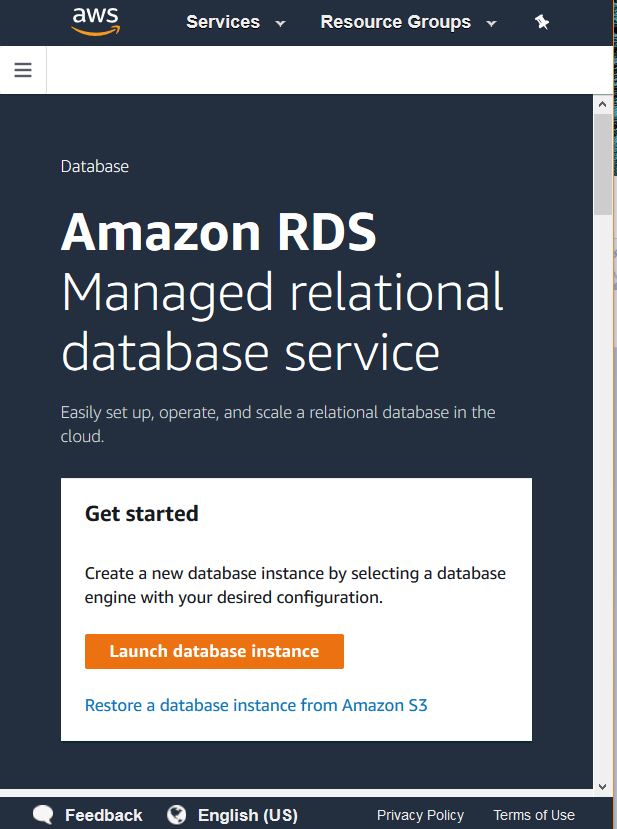
In case you have already created some RDS resources a summary of that will be available by scrolling down in the above page. A screen shot is shown below.
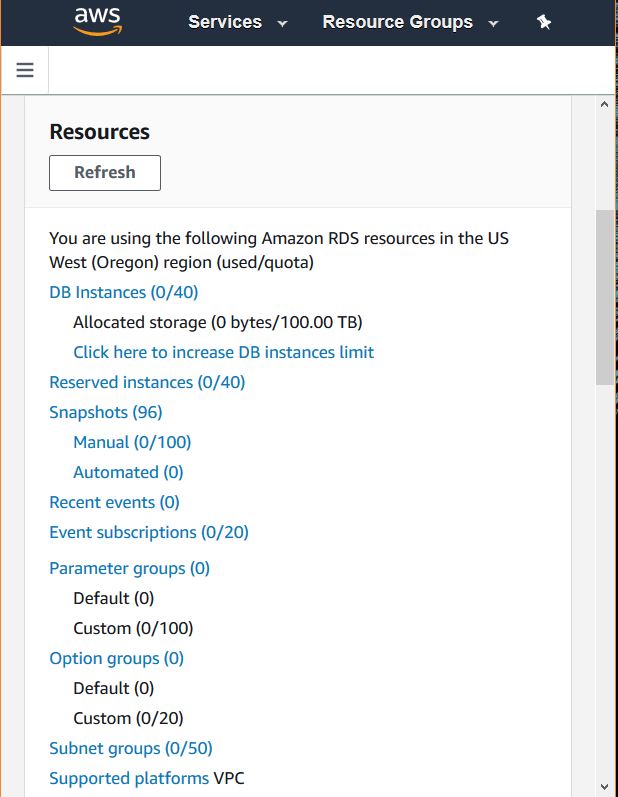
Step-3
The next screen gives us an option to select the DB engine we need and that is the start of our configuration steps for the database we need.
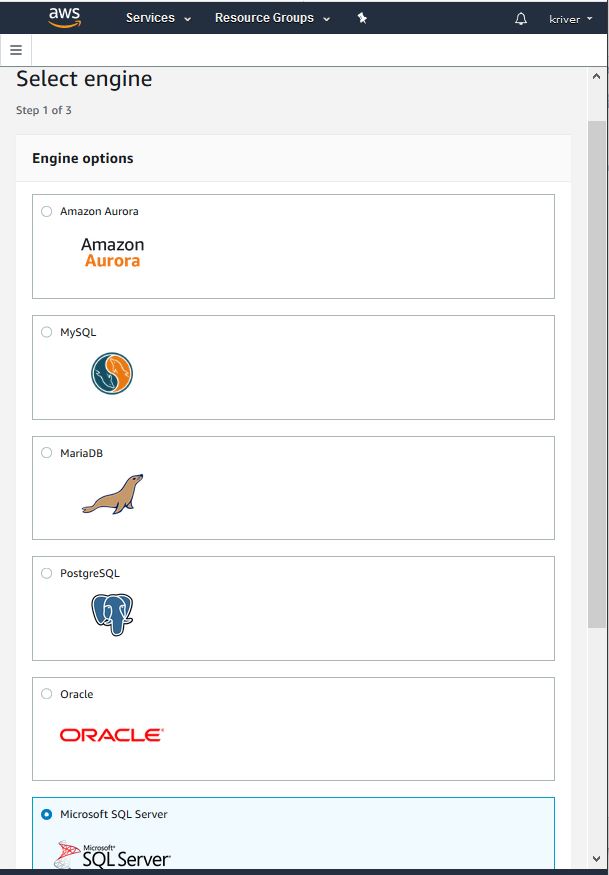
In the next chapter we will see the details on each of the industry’s popular database configuration and usage one by one.
Khóa học lập trình tại Toidayhoc vừa học vừa làm dự án vừa nhận lương: Khóa học lập trình nhận lương tại trung tâm Toidayhoc
